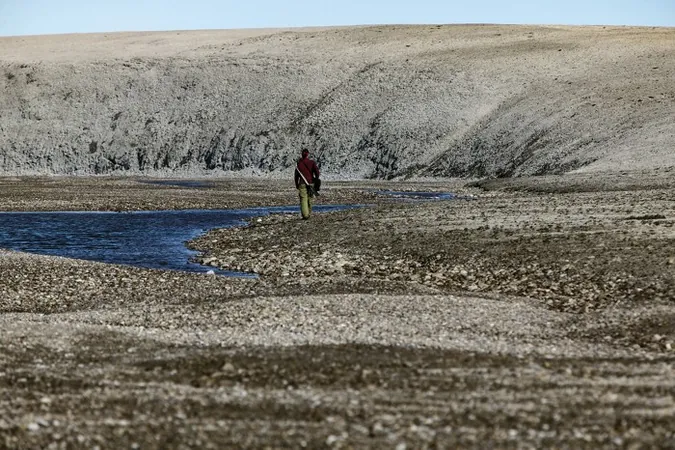
Unearthing Ancient Secrets: Scientists Decode Protein from Fossil Teeth Over 24 Million Years Old!
2025-07-11
Author: Li
Protein Preservation: Unlocking Evolutionary Mysteries
In a groundbreaking discovery, researchers have successfully extracted proteins from ancient mammal teeth dating back 24 million years, showcasing that peptides can endure in teeth enamel long after the creatures have vanished from Earth. These findings, published in the prestigious journal *Nature*, reveal the oldest known sequences that can help us untangle the complex web of evolutionary relationships among ancient species.
A New Frontier in Paleontology
Traditionally, scientists have relied on the size and shape of bones to categorize long-extinct animals, a process that can often lead to uncertain classifications. DNA extraction, while useful, has its limitations, as the oldest DNA recovered is only about 1.2 million years old. However, proteins, as it turns out, may hold the key to older evolutionary data than previously thought.
The Quest for Ancient Proteins
Ryan Paterson, a biomolecular paleontologist from the University of Copenhagen, led a team that aimed to locate the most ideal conditions for protein preservation. They targeted ancient enamel from teeth, particularly in the frigid Arctic regions where conditions are optimal for maintaining these biological treasures. Their efforts yielded remarkable results.
Revealing the Past: A Glimpse into Prehistory
Paterson's team analyzed a fossil tooth fragment from a rhino relative unearthed from Canada's permafrost, which is roughly 22 million years old. The results were astounding—around 1,000 preserved peptides were identified, effectively placing the species within its evolutionary family tree. This degradation doesn't undermine the data; rather, it emphasizes the longevity of protein preservation and suggests new timelines for significant evolutionary shifts among rhinos.
Exploring the Turkana Basin: A Fossil Goldmine
Another study focused on teeth ranging from 1.5 million to 29 million years old found in the Turkana Basin of Kenya, a site known for its harsh conditions yet rich in evolutionary history. This research unearthed peptides from an 18-million-year-old rhino relative and a variety of proboscideans, potentially illuminating our understanding of ancient elephant relationships.
Comparative Methods: A Study in Technique
While the Canadian study employed robust, conventional paleoproteomic techniques, the Turkana Basin's research ventured into less traditional methodologies. The differing approaches highlight the evolving landscape of paleoproteomics, as scientists continue to refine their tools to unlock lingering questions about our planet's past.
Implications for Future Research
This discovery raises the tantalizing possibility that proteins, once thought to be lost to time, can survive in various climates, not just the cold. As paleontologists and biogeochemists probe further into this realm, we may soon unveil more secrets about Earth's most ancient inhabitants, revealing how conditions for preservation can dramatically shift our understanding of evolution across different environments.
 Brasil (PT)
Brasil (PT)
 Canada (EN)
Canada (EN)
 Chile (ES)
Chile (ES)
 Česko (CS)
Česko (CS)
 대한민국 (KO)
대한민국 (KO)
 España (ES)
España (ES)
 France (FR)
France (FR)
 Hong Kong (EN)
Hong Kong (EN)
 Italia (IT)
Italia (IT)
 日本 (JA)
日本 (JA)
 Magyarország (HU)
Magyarország (HU)
 Norge (NO)
Norge (NO)
 Polska (PL)
Polska (PL)
 Schweiz (DE)
Schweiz (DE)
 Singapore (EN)
Singapore (EN)
 Sverige (SV)
Sverige (SV)
 Suomi (FI)
Suomi (FI)
 Türkiye (TR)
Türkiye (TR)
 الإمارات العربية المتحدة (AR)
الإمارات العربية المتحدة (AR)